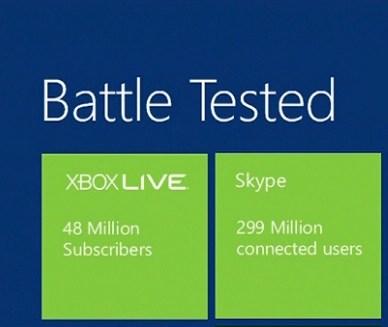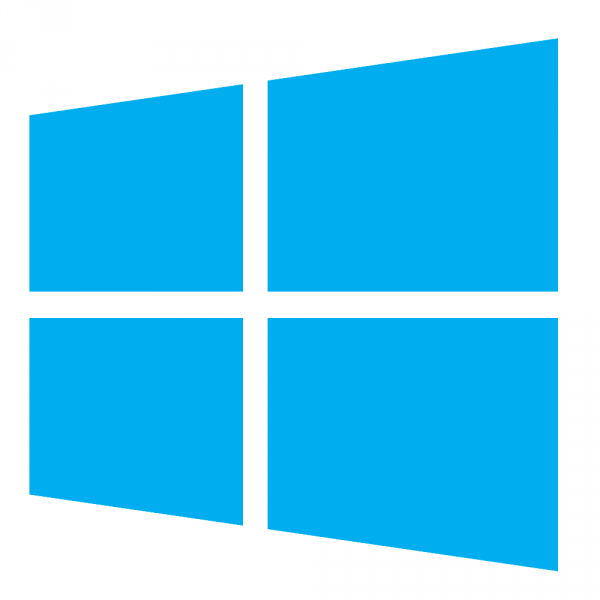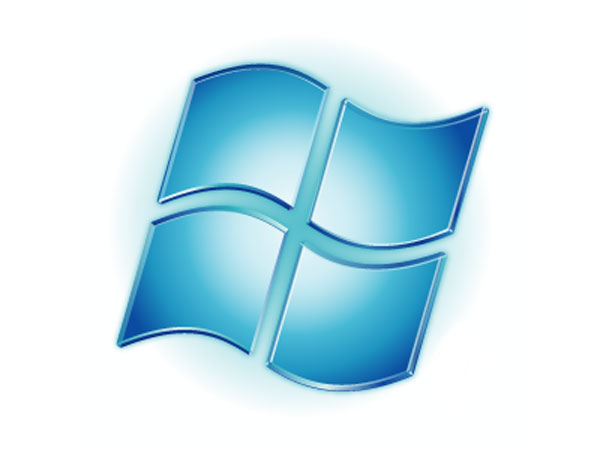
Windows-as-a-Service a step closer to reality as Azure RDS opens up
Microsoft slipped one under the radar for everyone who relies on its Azure service for Windows virtual machines. In a move that even took me off guard, Microsoft has reversed a longstanding policy of not allowing any form of RDS (Remote Desktop Services) on Windows Azure.
Previous policies strictly enforced remote desktop access on Azure only for the purposes of "administration and maintenance." As of July 1, this stumbling block for many Azure early adopters is finally gone, with a few caveats which I'll point out shortly.

Active Directory-as-a-Service? Azure, Intune hinting at a cloud-hosted AD future
When Active Directory first hit the enterprise computing scene over a decade ago, the tech pundits dismissed AD as just another Microsoft sideshow. Something that would never see any widescale adoption in the face of NetWare and other heavy hitters in the LDAP arena. Even longtime Microsoft watcher Paul Thurrott got it wrong and doubted success. Thirteen years later and organizations small and large live and die by their Active Directory domains.
It's funny, then, that AD is the sole dinosaur running atop on-premise servers at corporations worldwide which supposedly "can't" be moved to the cloud. Microsoft has been busily converting its on-premise products into cloud platforms with relatively good results over the last 3-4 years. While Microsoft surely doesn't want to become a has-been within the physical server arena for organizations hesitant to move to the cloud, it no doubt has been playing two face when it comes to on-prem vs cloud-hosted solutions.

Battle Tested: Microsoft’s cloud services by the numbers
During day two's keynote at the Microsoft Build 2013 developer conference, Server and Tools Business President Satya Nadella talked about the SaaS (Software as a Service) applications Microsoft runs.
In particular he focused on the scale and diversity of the company’s daily work in the cloud, while a "Battle Tested" slide displayed the all-important numbers for Xbox Live, Skype, Outlook.com, Office 365, SkyDrive and Bing.

Microsoft beefs up Windows Azure with two-factor authentication
In an effort to beef up the security of its cloud platform, late-yesterday, Microsoft introduced two-step authentication for Windows Azure. The new feature is available through a service called Active Authentication and, according to the software giant, is mostly aimed at enterprises.
"Companies can enable multi-factor authentication for Windows Azure Active Directory identities to help secure access to Office 365, Windows Azure, Windows Intune, Dynamics CRM Online and many other apps that are integrated with Windows Azure AD", says Windows Azure director Sarah Fender. "Developers can also use the Active Authentication SDK to build multi-factor authentication into their custom applications and directories".

Microsoft targets developers and testers with new Windows Azure update
Windows Azure undergoes constant improvements as Microsoft continues to beef up the cloud platform with new features and enhancements. The software giant has released SDK 2.0 for .NET (Software Development Kit), introduced Hadoop, Dropbox and IaaS (Infrastructure as a Service) support, new VM (Virtual Machine) configurations and adopted a new pricing strategy, all within the past couple of months.
And, late-yesterday, Microsoft revealed a new update for Windows Azure, designed to enhance its development and testing credentials. There are two noteworthy changes aimed at minimizing cost: users are now billed by the minute when using the cloud platform's resources (instead of by the hour, prior to the update) and they are no longer charged for stopped VMs (the deployment state and configuration are both preserved).

Windows Azure: Cloud-hosted virtual machines done right [review]
Some of Microsoft's greatest battles aren't being fought in the open, contentious field of constant public opinion and media coverage. If there's one thing Microsoft has always done better than the competition, it's blowing open new areas of opportunity and running with the ball on the sly. Apple and Samsung can keep their tactical flags limited to consumer electronics; Microsoft has far greater potential as a rising star in the cloud arena. The war started with its drive to push email to the cloud with Office 365, and the next leg of battle sits in the helm of Windows Azure and XaaS dominance.
If you're under the impression that we are not yet in the era of massive, prevalent 'big data', you're wildly mistaken. Our data needs are already climbing to astronomical levels, with IBM stating that 90 percent of the data in existence today was created in just the last two years. Not surprisingly, much of these growing data needs are being tossed into virtual environments whether it be on-premise in a VMWare or Hyper-V driven route, or my personal favorite: cloud-hosted virtual machines.

Windows Azure SDK 2.0 for .NET is now available
Microsoft is on an update streak with Windows Azure, introducing significant new features at a steady pace. For the past couple of months we have witnessed an overwhelming number of changes meant to improve the company's cloud platform, including the Iaas (Infrastructure as a Service) support announced two weeks ago.
Microsoft's latest move in this never-ending chess game with its rivals is the Windows Azure SDK (Software Development Kit) 2.0 for .NET which now features improvements for websites, cloud services, storage, service bus and PowerShell automation. Let's take a look at what's new.

Microsoft announces general availability of IaaS support for Windows Azure
Microsoft has announced the general availability of Infrastructure as a Service (IaaS) support for Windows Azure. The software giant also unveiled a couple of new features for IaaS meant to beef up the company's cloud platform. Timing is interesting --Amazon's AWS (Amazon Web Services) Summit kicks off in New York tomorrow.
Windows Azure's IaaS support introduces the Virtual Machine and Virtual Network features, and "is now live in production, backed by an enterprise SLA, supported by Microsoft Support, and is ready to use for production apps", according to Microsoft's Scott Guthrie.

The next Windows won't be called Blue
Microsoft knows something about cool codenames, but little on how to name actual products. Whistler, Longhorn, Cougar, Blackcomb, Vienna and even Blue all sound great, resounding and promising, but that impression goes away fast when Microsoft baptizes its creations: XP, Vista or 7. The guy with the cool names went on a bathroom break, and all the boring suits took over.
That's the very same impression I get after reading about Microsoft's "Looking Back and Springing Ahead" blog post, which touts a number of apparently impressive achievements and future plans that the company has. Lo and behold, there's even a strategy in place to raise the pace for "updates and innovations" -- that's the "new normal across Microsoft", according to the company. But then I notice the Windows Blue reference.

Microsoft updates Windows Azure with Hadoop and Dropbox deployment support
Microsoft's ongoing process to improve the company's cloud platform, Windows Azure, has reached a new phase. The software giant has, yet again, introduced a number of new features for Windows Azure, including the HDInsight service for Hadoop clusters, support for Dropbox deployment and Mercurial repositories, as well as enhancements to Mobile Services.
Windows Azure Mobile Services can now be used as a backend by "pure" HTML5/JavaScript clients, Apache Cordova/PhoneGap apps and Windows Phone 7.5 clients. The feature complements the previously-introduced Android Client SDK (Software Development Kit) and support for iOS, Windows 8 and Windows Phone 8.

Microsoft beefs up Windows Azure with Android support in Mobile Services
On Tuesday, Microsoft detailed another update addressed to Windows Azure, the software giant's cloud platform, aimed at fending off the attack from Amazon S3, Google Cloud Platform and other major competitors. One of the most noteworthy new features is support for developing native Android Apps in Windows Azure Mobile Services.
Microsoft has released the Android Client SDK (Software Development Kit) through GitHub, under the Apache 2.0 license. Windows Azure Mobile Services also features support for Android push notifications, which can be enabled by registering for Google Cloud Messaging, getting the API key and pasting it in the corresponding "Push" tab.

Microsoft updates Azure Enterprise Management
Just last week Microsoft began rolling out the Azure service in 25 new markets around the world, but the updates have continued today as Microsoft continues to move forward in its competition with services like Amazon S3, Google Cloud Platform and others. Today the company's Azure Director, Alex Simons, announces updates to the identity and access management capabilities in Windows Azure.
The service gains three new features -- the ability to manage users and their access rights in the Windows Azure Portal; preview of the new phone based two factor authentication for users who are Global Administrators in Windows Azure AD; and the ability to manage the synchronization and federation between your Windows Azure Active Directory and Windows Server Active Directory from within the Windows Azure Portal.

Windows Azure Store is now available in 25 more markets
On Wednesday, Microsoft announced a new update for Windows Azure, the company's cloud platform. Windows Azure Store now comes with expanded availability within 25 new locations across all major regions. This brings the tally up to 36 markets, a significant increase over the previous 11 from little over two months ago when the software giant announced a similar update.
The Windows Azure Store is designed to allow users to discover, purchase and manage services and data straight from the cloud platform's management portal. The feature was previously only available in Canada, Denmark, France, Germany, Ireland, Italy, Japan, South Korea, Spain, United Kingdom and United States.

Microsoft claims expired SSL Certificate caused Azure outage
Microsoft's cloud service, Windows Azure, along with Team Foundation Service, suffered a major outage yesterday that also affected non-enterprise people, as it resulted in problems with Xbox Live as well. However, according to the Xbox Status page, the Live system, along with Xbox Music and Video, which were also affected, is back up and running.
Now, as of this morning we have some information on the root cause of the much-publicized problem. Brian Harry, Product Unit Manager for Team Foundation Server, blames the nine-hour outage on "an expired SSL certificate in Windows Azure storage". Harry goes on to explain that the company stores "source code files, Git repos, work item attachments and more" there and that "the expired certificate prevented access to any of this information, making much of the TFService functionality unavailable".

Windows Azure now features VM Depot integration
Microsoft Open Technologies unveiled the VM Depot public preview early last month, and the software giant has just announced that its community-driven open-source virtual machine image catalog is now integrated into the company's cloud platform, Windows Azure.
The new feature is available through the Windows Azure management portal and is designed to ease the handling of virtual machine images from VM Depot. The cloud platform's users can take advantage of open-source stacks, "based on supported Linux distributions, made available by members of the community and directly provision the files as personal images straight from the Windows Azure portal".
